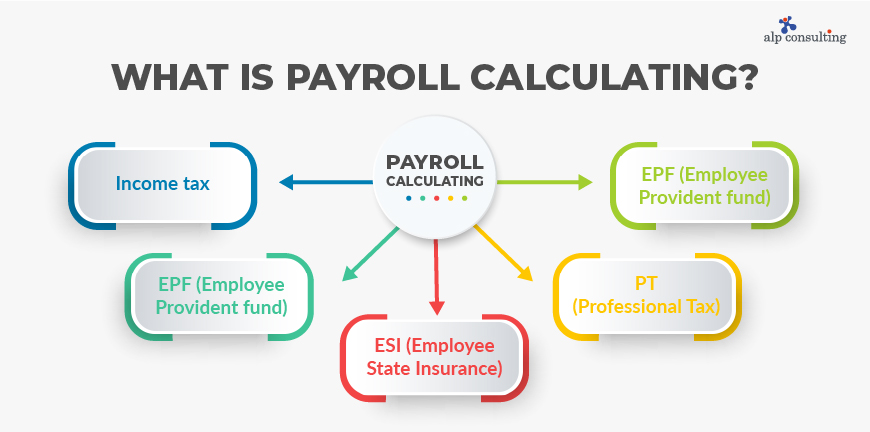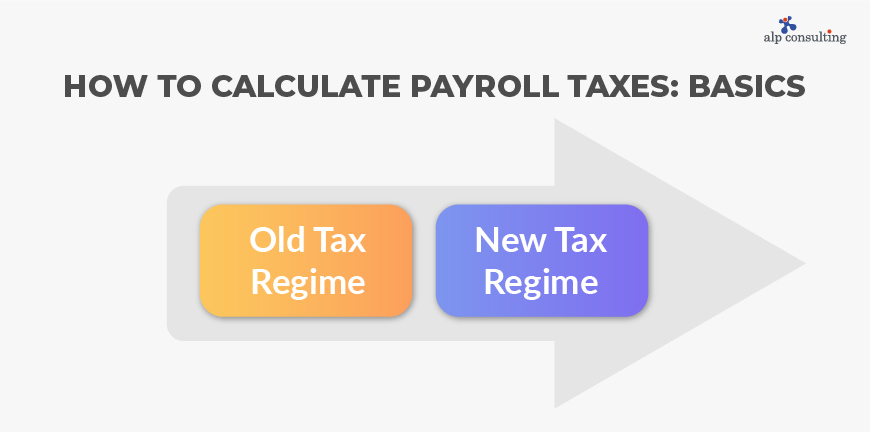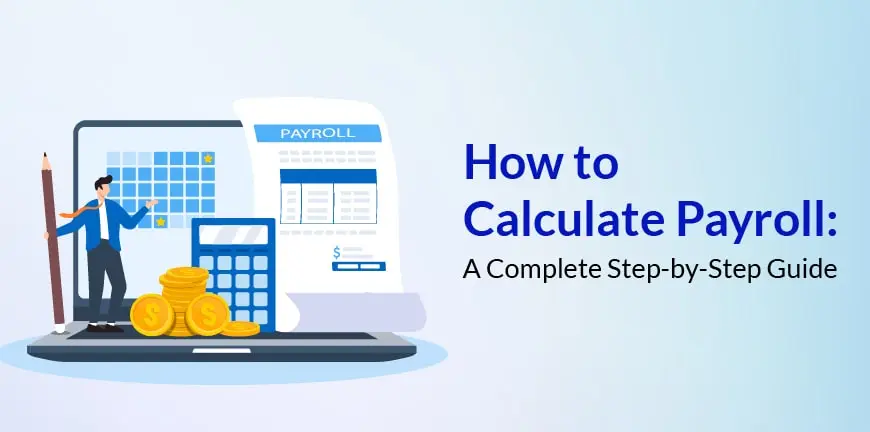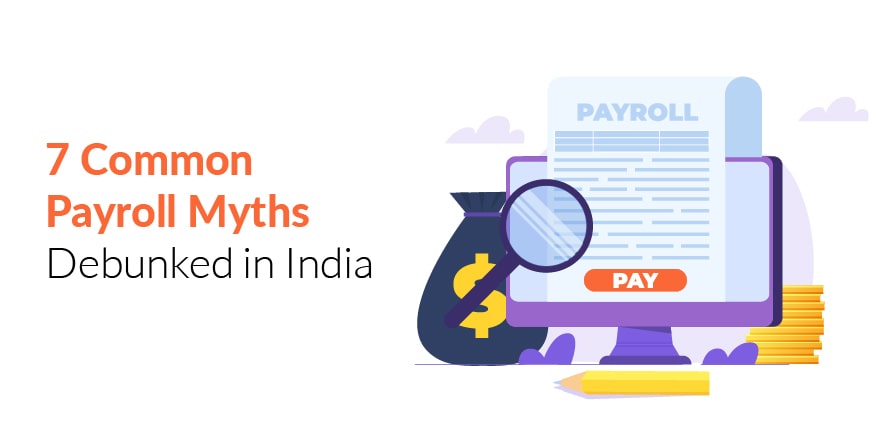
What is On-demand Recruitment?
04/04/2024
5 Candidate Sourcing Strategies to Find Top Talent
05/04/2024For any business, having a streamlined payroll system is important. Suppose you are an organization with a large number of employees. In that case, accurate and swift payroll calculation is next to impossible, which is why, as a responsible organization, your first order of business must be to automate your payroll process. Payroll delays and errors do not just create chaos among employees but can affect your organisation’s credibility as well.
When it comes to processing payroll, the first, most critical step is to calculate the payroll correctly. Some techniques can be used to ensure accuracy when it comes to calculating your payroll.
What is Payroll Calculating?
Payroll calculation is the process of calculating the amount of money an organization pays its employees for the work they deliver during a specific period. This includes their salaries, bonuses, and other benefits after withholding the required taxes from their gross pay.
Calculating payroll can be a complex procedure, as there are several factors that impact the calculation.

Some of the crucial factors that affect the payroll calculation in India are-
1. Income tax
Employees working with a legit employer are subject to income tax based on their salary and allowances. Employers are required to deduct the necessary taxes from the employee’s gross pay before disbursement.
2. EPF (Employee Provident Fund)
All employees are liable to contribute to the employee’s provident fund, a retirement benefits scheme. The contribution is usually 12% of the employee’s salary.
3. ESI (Employee State Insurance)
The ESI is a social security scheme that provides employees with medical and cash benefits. Every employer with an organization strength of more than 10 employees must register under the ESI Act. Employers contribute 4.75% of the employee’s salary(gross pay), and employees contribute 1.75% of their salary.
4. PT (Professional Tax)
This varies from state to state. Some states in India levy a professional tax on employees, a minimum amount, which is deducted from their salaries.
5. Encashment of Paid leaves
A certain number of leaves are provided to employees annually, like privilege leaves, sick leaves, and casual leaves. In case an employee does not use all their leaves, they are entitled to encash them at the end of the year. The amount depends on the employee’s salary and nthe umber of leave days.
How to Calculate Payroll Taxes: Basics
There are certain basic rules to be followed while calculating payroll taxes. Note that we are explicitly talking about the calculation of only payroll taxes and not the entire calculation of payroll.

There are two regimes according to which payroll taxes can be calculated, and employees can choose either one of them.
1. Old tax regime
- Income Tax formula for old tax regime = (Basic + Allowances – Deductions) * 12 – (IT Declarations + Standard deduction)
- Deductions are the sum of ESI and PT, etc.
- Standard deduction (50,000)
2. New tax regime
- Income Tax formula for new tax regime= (Basic + Allowances – Deductions (ESI)) * 12 – (Standard deduction)
- Only ESI is considered a deduction.
- Standard Deduction (50,000)
Taxpayers can opt for either regime to pay taxes by carefully considering the exemptions and other leniencies allowed and the difference between the two.
Payroll Calculations
Payroll Calculations consist of 4 main components:
- Basic Pay
- Allowances
- Deductions
- IT declarations
To calculate each of these components, there are specific formulas that must be followed. A payroll calculator can streamline the process of payroll calculations for each employee’s earnings, taxes, and net pay.
Payroll Calculation Formulas
Net pay is the final payout that is disbursed to an employee after all the necessary deductions have been made.
Net Pay Gross Pay- Gross deduction
Gross pay = Basic salary + HRA + DA + Allowances + One-time payment/incentive (Reimbursements, Arrears, Bonus, etc.)
Gross Deduction = Professional Tax + Employees’ State Insurance + Public Provident Fund + Income Tax + Insurance + Leave adjustments + One-time deduction (Loan recovery)
- Basic salary 50% of Gross pay (Gross*0.5)
- HRA (House Rent allowance) = an amount received from the employer as part of allowances.
The amount of HRA you are allowed Actual rent paid, less 10% of the basic salary
If you are staying in a metropolitan city, 50% of the basic salary is allocated, and if staying in a non-metro city, 40% of the basic salary is allocated.
- Professional Tax= 12% of Basic pay + PF allowance if applicable
- Employee State Insurance= 0.75% of Gross pay
- Income tax calculation depends on the type of regime
Net pay is the in-hand salary an employee receives at the end of the pay period. The net pay calculation depends on the CTC structure.
Processing of Payroll
Once you have calculated the net pay, you can go ahead and process the employees’ salaries through the specified method of payment on the specified date as per the pay policy. Make sure that there are no delays in processing payroll. It helps in running the company efficiently as well as gaining the employees’ trust.
Make sure to upload the payslips on the ESS portal for your employees’ reference post processing their salaries. It helps them get loans, get future employment, as it acts as a legal document of employment.
Maintain Payroll Records
Post the calculation and disbursement of salaries, it’s important to maintain payroll records. Some of the reasons for maintaining these records are-
- Avoidance of compliance issues in the future.
- In case of salary deductions, there must be a record of the same to avoid salary disputes in the future.
- According to payroll laws, all organizations must maintain payroll records periodically.
What are the Options for Calculating and Recording Payroll?
There are numerous ways of calculating and recording payroll. Depending on the size and complexity of your organization, you can choose your preferred option for processing payroll.
There are three main options:
1. Manually
Manual calculation of payroll using paper-based math isn’t much preferable in this advanced era of technology. Also, because this method requires extensive human intervention, it is time-consuming and more prone to errors.
If you are a small company with a less strengths and are comfortable processing payroll manually, then you can. But it’s best to have a person who understands the in and out of processing payroll, regardless of the method you choose.
2. Excel sheets
Excel sheets are one level up in terms of ease than manual payroll processing. But again, there is a risk of data theft in this method. However, Excel sheets can help you distribute the hours, minutes, and other conversions efficiently and quickly into the sheets.
Make sure you update the sheets after every payroll, as well as double-check them.
3. Cloud-based Software
This is the most effective solution for calculating and processing payroll. Payroll software helps streamline your payroll process by calculating and converting the rates without the need for human intervention. The salary system can be pre-integrated with time and leave management solutions, facilitating easy gathering of all the data required.
Make sure you choose the right payroll software that has a reasonable price in order to avoid mismanagement.
Are You Looking for Payroll Solutions?
Payroll Calculations can be tedious and time-consuming. Whether you are a small, mid-sized, or large business, processing payroll correctly is an extremely important part of the organization. Having a dedicated payroll team is essential to ensure the smooth processing of payroll. This is where we come in.
Alp Consulting has been a leading payroll solutions provider for decades now. Our experience and expertise in calculating, processing, and managing payroll help our clients run their business efficiently, while we take care of one of the complex functions of their organization. Our comprehensive payroll services are made for organizations of all sizes and cater to all industries.
If you are an organization looking for the right payroll solution for your business, reach out to us today, and we’ll help you with your payroll challenges by streamlining your payroll process.
Frequently Asked Questions
1. How to calculate payroll amount?
Payroll amount is calculated by first ascertaining the employee’s gross pay by adding base salary along with any reimbursements or bonuses, and then subtracting deductions.
2. What is the formula for calculating payroll?
The fundamental formula of payroll is Net Pay = Gross Pay – Deductions.
3. Is the salary calculated for 26 days or 30 days?
Salary in India is essentially calculated for 26 days to adhere to labour laws and for minimum wage considerations.
4. How to calculate PF & ESI on salary?
Calculation of PF and ESI includes adding the employee’s basic salary plus dearness allowance (DA) and then applying the respective percentages for each contribution.
5. What is TDS in salary?
TDS or Tax Deducted refers to a certain amount deducted from an employee’s salary by the employer to submit to the government.
6. What are PF and PT?
PF or Provident Fund is a retirement scheme for savings where employees and their employers contribute a portion of the employee’s salary into a fund, which can be withdrawn during retirement or under specific circumstances.PT or Professional Tax is levied on the incomes of all kinds of professions, trades, and employment.
7. How to calculate CTC in salary?
CTC is calculated by summing up the gross salary and the additional benefits, perks, and statutory contributions provided by the employer.
Contact Us For Business Enquiry

Yugandhara V. M
Yugandhara V. M serves as the Assistant Vice President – HRO at Alp Consulting Ltd., bringing over 14 years of rich experience in Human Resource Outsourcing, payroll management, and statutory compliance. He specializes in driving process excellence across HR operations, ensuring seamless service delivery and compliance with labor laws. Yugandhara’s expertise lies in managing large-scale client engagements, optimizing HR processes, and implementing efficient workforce management systems that enhance organizational performance. He also leads comprehensive payroll services, ensuring accuracy, timeliness, and compliance for diverse client portfolios.





